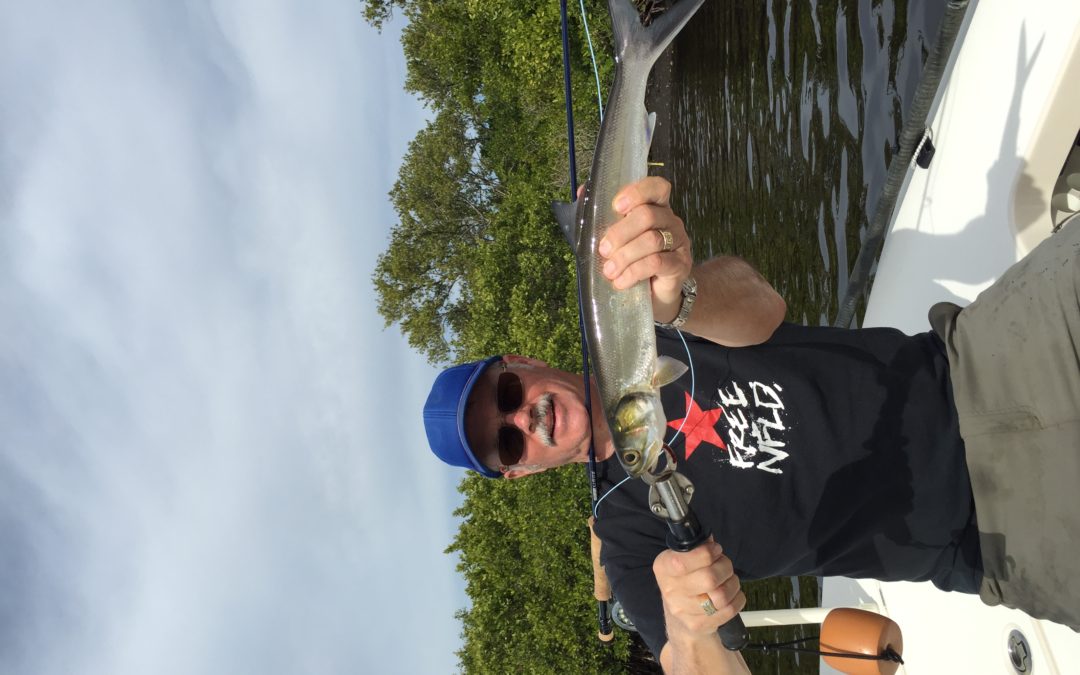For the first time saltwater fly fisher or for even a total beginner there may be no better target than the fast moving wild and crazy ladyfish. Yes, the species that most consider a trash fish as well as the poor man’s tarpon. Just like the late Rodney Dangerfield, they for sure don’t get any respect. That is of course unless you’re looking for what I like to call redfish candy. It makes a great cut bait for redfish; but’s that’s a story for another day. However, I will warn you in advance to keep them out of the boat. Because, they’ll poop and slime all over the place if they hit the deck. If they do, clean it up right away as it can be tough to clean up after the sun bakes it into your gelcoat and non skid.
Anyway, with that being said, they provide the perfect opportunity to help develop some important skill sets necessary in the salt. You see, because they can be abundant and aggressive they provide lots of practice without the stress of making mistakes as they just keep coming back for more and more until we get it right. Many times, there’s a group chasing the fly competing to see who gets to eat first. It’s also very visual which adds to the experience.
First and foremost, is the ever important strip set. Believe me, life long habits like a trout set can be challenging to overcome. You’ll get lots of practice with these guys. Ladyfish are fast swimmers as their forked tail implies so they do like a fast moving fly. This will provide ample practice of keeping the rod tip low and learning to strip or move the fly. The cartiledge in their jaw is tough making them hard to hook and they jump quite a bit. More practice. A good one in the three plus pound size range will surprise most anglers at just how hard they can pull.
Typically, they’re found in open water and they do like two to four feet. The advantage here is that this is a greta place to practice casting compared to the more technical aspects of working a tight mangrove shoreline. We can put the wind at our backs which can be tricky on a shoreline as they don’t always line up in a good direction to battle the wind which is always the elephant in the closet. This open flat scenario gives us a chance to work on the haul that is so helpful in the salt. Moreover, there is probably no better place to practice casting than on the bow of a skiff with plenty of room for a back cast and the decent visibility that comes from an elevated bow.
I can assure you that for someone new to the salt it’s a good introduction to the sport.


Recent Comments